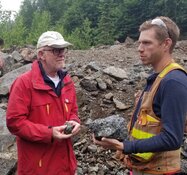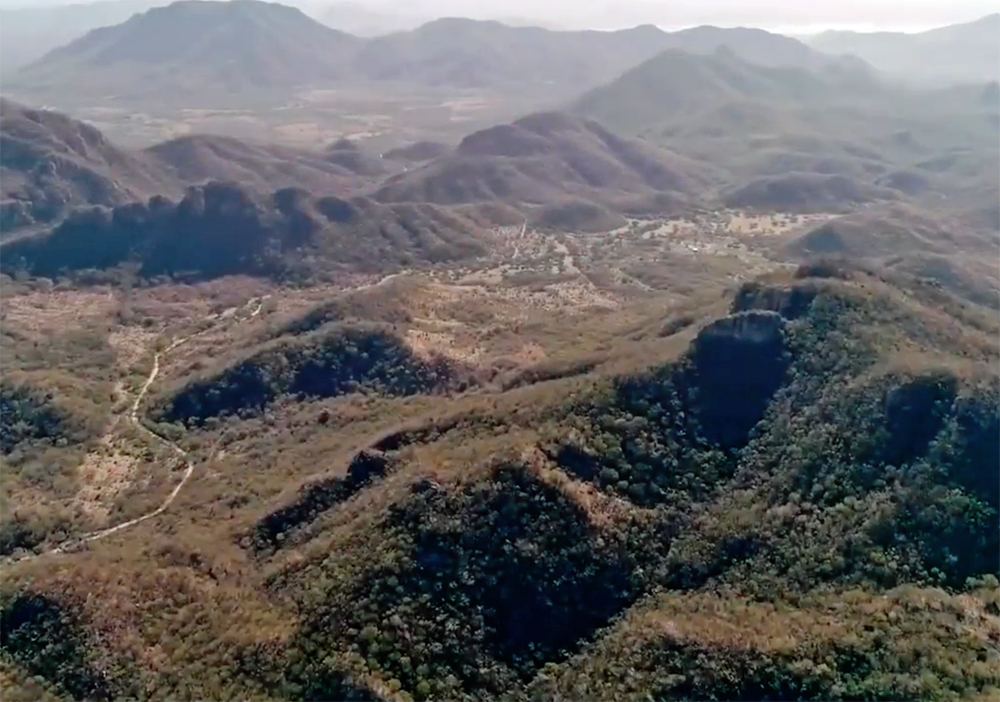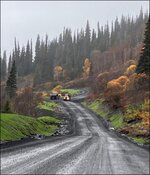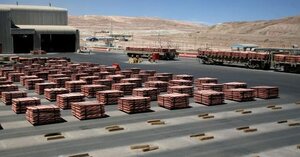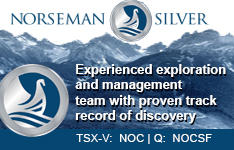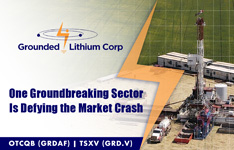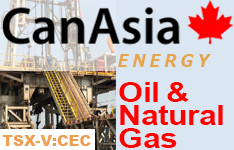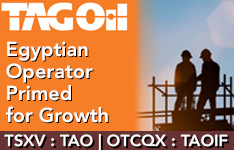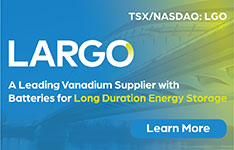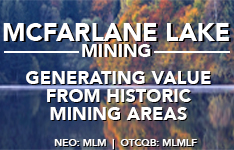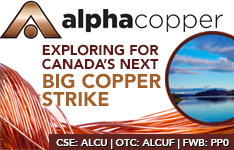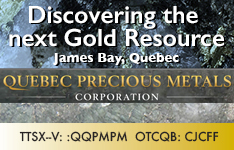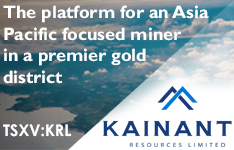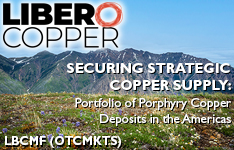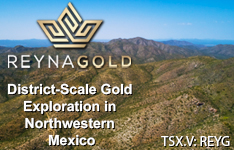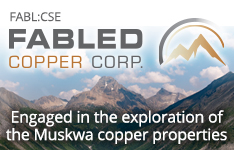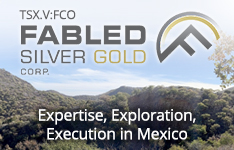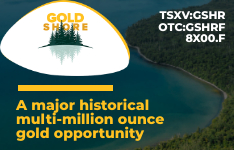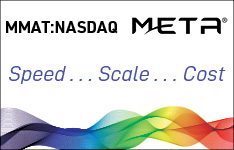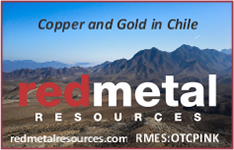On March 21, Slave Lake Zinc Corp. (SLZ:CSE) announced that its review of historical drill logs indicates that the extensive drill program testing zinc–lead deposits at the original discovery site — MWK Number 1 vein — also reported intersecting pegmatitic dykes and pegmatitic granite in multiple drill holes.
These pegmatite intersections recorded in 1952 ranged from less than half a meter to over 8 meters within the same drill holes as multi-meter intercepts of highly prospective zinc-lead mineralization at the "head frame" area of the project.
This pegmatitic material is present as dyke swarms or injections, but no sampling to test for the presence of lithium or other critical metals in these rocks was ever done. As part of the proposed summer work program, Slave Lake plans to locate the old core to determine whether sampling it for lithium is still feasible.
The Catalyst: More Pegmatitic Material
The new findings increase the area on the Slave Lake property known to contain pegmatitic material to over 7 kilometers from west to east and 6 kilometers from north to south. Favorable host rock also extends beyond this area, providing additional prospective pegmatite exploration target areas.
The pegmatitic granites vary from "fine" to "coarse" grained and have border contacts ranging from sharp to gradational with their enclosing host rocks. They are composed of various feldspars and quartz, containing accessory minerals including tourmaline, biotite, muscovite, and red or purple garnets, but the old owners did no other study of these rocks beyond identifying their presence.
The Hearne Channel pegmatite deposits now being explored by LiFT Power lie some 120 kilometers north, across Great Slave Lake. These lithium-mineralized pegmatites occur in a geological setting similar to that at O'Connor Lake and provide regional exploration models for the Company.
Why This sector? The Growing Need for Zinc
The U.S. government recognizes zinc as a strategic metal due to its importance in various applications. One of the primary uses of zinc metal is galvanizing iron and steel against corrosion.
Zinc itself forms a waterproof coating of its oxide on exposure to the atmosphere, making it more resistant to ordinary atmospheres than iron and causing it to rust much slower. Zinc alloys, including brass, are vital to various applications, from corrosion-resistant marine components to musical instruments.
The white metal is also an essential trace element in the human body, where it is found in high concentrations in red blood cells as an essential part of the enzyme carbonic anhydrase, which promotes many reactions relating to carbon dioxide metabolism.
Solar-related zinc demand is expected to grow from 85,000 tons annually in 2020 to 160,000 tons annually by 2030.
The zinc present in the pancreas may aid in the storage of insulin. Zinc is a component of some enzymes that digest protein in the gastrointestinal tract, and zinc deficiency can cause diseases in nut-bearing and fruit trees.
Zinc is an especially important mineral in green technology. The rise of green energy technologies required for a low-carbon future is expected to lead to significant growth in demand for zinc. Zinc's primary use in galvanizing steel protects everything from buildings and bridges to transmission towers and wind turbines.
The global clean energy transition will have far-reaching consequences for mineral demand over the next 20 years. By 2040, total mineral demand from clean energy technologies is expected to double in the Stated Policies Scenario (STEPS) and quadruple in the Sustainable Development Scenario (SDS). Zinc will play a significant role in this transition.
The global zinc surplus is likely to shrink as demand growth outpaces any increase in production. UGMK, a Russian copper and zinc producer, expects world zinc production to rise 2.9% to 14 million mt as Chinese plants continue to ramp up output in the face of solid domestic demand. However, it forecasts demand growth to outpace that with a 4.2% increase to 13.52 million metric tons.
Zinc demand will also benefit from growth in renewables. Solar-related zinc demand is expected to grow from 85,000 tons annually in 2020 to 160,000 tons annually by 2030. The increasing demand for zinc phosphate coatings is partially due to the thriving automotive industries and construction sectors in emerging countries such as China and India.
Why This company? More Than Just Zinc
In a recent interview, Chris Andrew of Clarmond Securities explained his bullish sentiment toward Slave Lake Zinc Corp. Stock.
Slave Lake Zinc Corp. CEO Ritch Wigham explains, "This recent information demonstrates that pegmatite granite systems are widespread on our property. It is important to note that only preliminary study of these pegmatites was ever done, and only then because they were associated with the structures being explored for zinc and lead prior to 1952."
"As we continue to focus on further exploration for high-grade zinc, lead, and copper within our large property, we will also sample for lithium and other critical metals in all pegmatitic material that we encounter. As a result, Slave Lake has a unique opportunity to have prospectivity for multiple ‘critical metal' exploration targets."
Why Now? Still Undervalued, Even If It Is Just Zinc
In a recent interview, Chris Andrew of Clarmond Securities explained his bullish sentiment toward Slave Lake Zinc Corp. Stock.
"I like it because it's cheap," Andrew said. "It's gone very cheap, like a lot of these Canadians, and I really liked the management because, to me, management is everything."
He considers the company's slower pace of development an asset in its own right: "What I really liked about it," he said, "was that they've taken a lot of time to get to this position and this place, and they haven't rushed it."
The analyst was also impressed by the company's relationship with Northwest Territory Métis Nation (NWTMN). "That's a really powerful thing to have because, once you're on the inside there, everything becomes a lot easier."
"We, therefore, stay long, and Slave Lake continues to be rated a speculative Buy in this zone," Clive Maund said.
In addition, he's tanalized by notions of what else might be in the ground with the zinc. "It's copper; it's lead; it's silver; it's gold. By the sound of it, you scratch the surface up there, and you can find another mineral. So that's also amazing. So it just looked geologically like a very interesting area, on top of a really good team . . . what's not to like?" he asks.
"It's relatively cheap, and it's well managed, so there's a good chance that if they execute their plan, then you've got a really great asset here that they're going to bring forward."
Analyst Clive Maund agrees. In a report from January 9, he explained that "the 5-year chart shows the entire life of the stock from when it started trading late in 2018, and on this chart, we can see immediately that the price is hard down on a zone of strong long-term support where it is forming a large Double Bottom with its lows of late 2021."
"With the price and its moving averages now bunching together and the 200-day flattening out, the probability that the price will advance out of this base to commence a new bull market is steadily growing," he continued. "The fundamentals of the company certainly appear to be promising with the recent dearth of news providing the cover to quietly accumulate the stock, and it is worth noting that Canada recently rated zinc ‘a strategic metal'. We, therefore, stay long, and Slave Lake continues to be rated a speculative Buy in this zone."
Ownership and Share Structure
Company management owns approximately 20.8 million shares — 42.5% of outstanding shares, or 30.9% on a fully diluted basis. There are no institutional investors on record, and all of the outstanding stock is retail except for the CA$150,000.00 balance of the debenture outstanding. The company has roughly CA$300,000 in the bank and is burning CA$25,000/month at current operating levels.
Slave Lake Zinc Corp. has a market cap of CA$5.15 million, with 54 million shares outstanding. The company also has 6,452,000 options in the CA$0.10-0.105 price range expiring between Feb 22, 2023, and Nov 7, 2024, as well as 12,095,000 warrants ranging from CA$0.15 to CA$0.18 expiring between March 25, 2023, and Feb 18, 2025. An additional CA$150,000 in CA$0.08 convertible debenture financing adds another 1,875,000 potential claims. The total outstanding fully diluted share count is 74,549,210.
| Want to be the first to know about interesting Critical Metals and Base Metals investment ideas? Sign up to receive the FREE Streetwise Reports' newsletter. | Subscribe |
Disclosures:
1) Owen Ferguson wrote this article for Streetwise Reports LLC and provides services to Streetwise Reports as an independent contractor. He or members of his household own securities of the following companies mentioned in the article: None. He or members of his household are paid by the following companies mentioned in this article: None.
2) The following companies mentioned in this article are billboard sponsors of Streetwise Reports: None. Click here for important disclosures about sponsor fees. The information provided above is for informational purposes only and is not a recommendation to buy or sell any security. As of the date of this article, an affiliate of Streetwise Reports has a consulting relationship with Slave Lake Zinc Corp. Please click here for more information.
3) This article does not constitute investment advice. Each reader is encouraged to consult with his or her individual financial professional and any action a reader takes as a result of information presented here is his or her own responsibility. By opening this page, each reader accepts and agrees to Streetwise Reports' terms of use and full legal disclaimer. This article is not a solicitation for investment. Streetwise Reports does not render general or specific investment advice and the information on Streetwise Reports should not be considered a recommendation to buy or sell any security. Streetwise Reports does not endorse or recommend the business, products, services or securities of any company mentioned on Streetwise Reports.
4) From time to time, Streetwise Reports LLC and its directors, officers, employees or members of their families, as well as persons interviewed for articles and interviews on the site, may have a long or short position in securities mentioned. Directors, officers, employees or members of their immediate families are prohibited from making purchases and/or sales of those securities in the open market or otherwise from the time of the decision to publish an article until three business days after the publication of the article. The foregoing prohibition does not apply to articles that in substance only restate previously published company releases. As of the date of this article, officers and/or employees of Streetwise Reports LLC (including members of their household) own securities of Slave Lake Zinc Corp., a company mentioned in this article.


